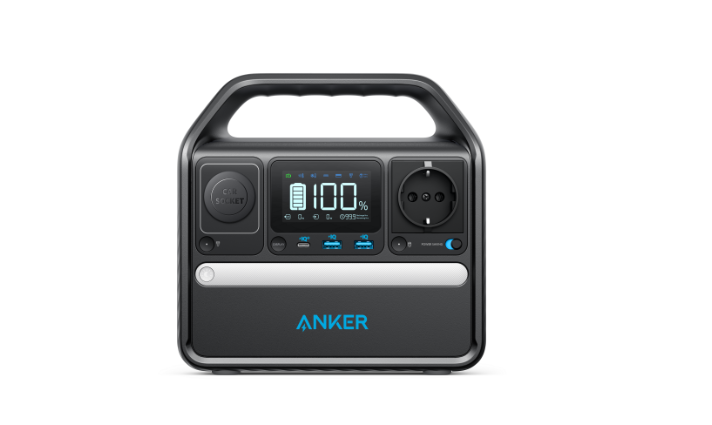Hardware
Gadget of the Week: Portable power wins the day – and night
“Every home needs a hero,” says Anker, and its PowerHouse 521 fits the bill, writes ARTHUR GOLDSTUCK.
Portable power stations (PPSs) have become almost as commonplace in South Africa as smartphone power banks – and as difficult to tell between the good and the so-so.
Anker, known for its charging devices, has combined both quality and the cool factor into its PPSs. Its PowerHouse 521 and 535 models arrived in South Africa at the end June, just in time to help consumers deal with the absurdity of Eskom announcing the return of Stage 6 loadshedding.
The company’s theme, “Every Home Needs a Hero”, could not have been more appropriate. We tried out the PowerHouse 521, and it turned out to be both a hero and a friend. The former, because it could quickly be attached to any needed low-power device in our home, office and mobile environment, The latter, because it felt like a companion rather than a burden, especially when taking it along for a ride in a car.
First, the not-so-good news. It is a 256Wh capacity device with an output of a mere 200W, meaning it cannot charge your heater or kettle – those much-needed appliances taken out by loadshedding. But it is good enough for a laptop, a low-power TV like many of the current large-screen OLED units, and charging any number of smartphones.
Its biggest plus is its range of charging sockets: aside from a three-pin EU socket, a must for many South African appliances, it also has a fast-charging USB-C and two fast-charging USB-A ports, along with a car-charger socket.
All the ports can be used at once, bringing the wattage down to the following maximum limits:
Wall outlet: 200W
Car Outlet: 120W
USB-C: 60W
USB-A x 2: 18W shared
All of these are fed by a lithium iron phosphate (LiFePO4) battery, the kind of batteries used in electric vehicles, which are claimed to offer six times more usage than conventional batteries. It is a reliable option that promises 3000 battery cycles – that is full recharges without deterioration – and a 50,000-hour life expectancy, five times more than the market average.
We were unable to use it for long enough to evaluate any deterioration from multiple usage scenarios and constant charging.
However, it also comes with a 5 Year Warranty. You don’t see that too often in a charging device.
A unibody drop-proof design makes it solid, and rugged enough for outdoor use. It is made from an automotive-grade aluminum alloy that is both corrosion and temperature-resistant. Think camping and parties.
It is compatible with portable solar charging panels, so the prepared outdoors person can keep appliances going for days out in the wild.
It takes less than three hours to charge fully, and automatically cuts power once fully charged, so that one is not constantly feeding it and wasting power.
Its specs for different kinds of charging are:
60W USB-C + AC: 2.5 hours
AC: 4.1 hours
Car: 4.1 hours
60W USB-C: 4.3 hours
Solar Panel: 4.1 hours +
One of the best features for home use is an LCD screen that displays battery percentage, current input and output status, and estimated recharge time. Outside the home, the winner is a car-charging cable that comes with the unit. A built-in LED light is a winner in the dark, bit in the outdoors and during loadshedding indoors.
What does it cost?
The PowerHouse 521 is available for R5,999 at Takealot
Why does it matter?
Faraz Mehdi, general manager of Anker for Middle East, Africa and South Asia, says the PowerHouse is “more than just a power backup”.
“We’re aiming to bring South Africans a reliable, user-friendly solution that helps to maintain their daily routines and supports their lifestyles, health and well-being during periods of power instability.
“For instance during unexpected outages, it can power utilities, allowing children to continue their studies without interruption. For those dependent equipment that run on electricity, the PowerHouse ensures that the devices remain operational, adding an extra layer of security and peace of mind.”
What are the biggest negatives?
- Low output limits it to low-power devices.
- And, errr, that’s it.
What are the biggest positives?
- Highly portable.
- Highly durable
- Looks good.
- Multiple types of charging outlet.
- A 5-year warranty.
* Arthur Goldstuck is founder of World Wide Worx and editor-in-chief of Gadget.co.za. Follow him on Twitter and Instagram on @art2gee

















